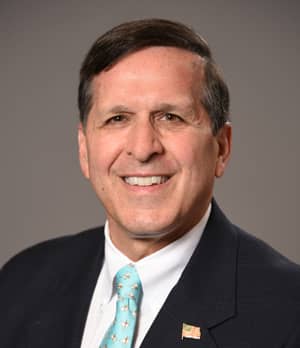Orthodontics is entering a new era due to two factors — one negative and one positive. Having a successful practice going forward is all about understanding how to balance both.
By Roger P. Levin, DDS
For many years in dental history, orthodontic practices have been stable. The economic laws of supply and demand worked in the orthodontic practice’s favor, and most orthodontists were busy enough to have a great lifestyle and a fun retirement. Furthermore, this could also be achieved by working 3 or 4 days a week due to the volume factor in orthodontics that is not present in other dental specialties or general medicine. As a result, most orthodontists have been able to build highly successful practices and maintain that success throughout their careers.
Fast forward to today. Orthodontics is entering a new era due to two specific factors. One factor represents risk, which is the increased competition that occurs with new service delivery models and different fee levels than in the past. The other factor represents opportunity, which is achieved through significantly increased chair time available in most orthodontic practices, allowing the practice to treat more patients and increase production commensurately.
The danger: the competition
Orthodontics has had a long history with low levels of competition. Now, with the advent of aligners, orthodontic competition is expanding and will continue to expand rapidly. In addition to traditional orthodontic practice, we are now seeing dental general service organizations (DSOs) adding orthodontic treatment, orthodontic-only DSOs, and general dentists providing aligners, as well as direct-to-consumer orthodontics. Along with these new service delivery models are variations in fees that range from under $2,000 for full aligner treatment to orthodontic practice fees that average $5,700, with many practices charging much more. This level of competition is a risk to any orthodontic practice.
Every practice should have a specific strategic planning section that focuses on practice branding and referral marketing strategies that will generate a steady flow of referrals. In today’s more competitive landscape, referral marketing will be more critical than ever, and the Levin Group suggests that orthodontists market to five areas of focus: patients, parents, referring physicians, social media, and community. We also always emphasize that you should not write off referring doctors simply because they are involved in certain orthodontic cases. A recent survey showed that $3.6 billion per year in revenue is reported to orthodontic practices from general practices. This may be lower than in the past, but it is still a huge amount of revenue being referred to orthodontic practices.
Referral marketing has always been part of the orthodontic specialty, but now we encourage orthodontists to consider referral marketing as mandatory. It should be considered as important as providing clinical treatment in order to allow practices to remain successful. Not all orthodontic practices will automatically be successful in the future. We are entering an era where there will also be a fragmentation of practices ranging from seemingly successful to highly challenged. You want to make sure your practice is part of the highly successful group, typically represented by the top 50% of orthodontic practices in terms of production and profitability.
The opportunity: more chair time (without adding more chairs)
Although still emerging, remote monitoring is expanding into orthodontics. We are in the early adopter phase of remote monitoring, but looking at market forces and trends, it is on track to become more and more mainstream. I am in no way commenting clinically on its merits and do not wish to enter into that debate. However, it is clear that telemonitoring is set to expand, with many European orthodontic practices already using it at a greatly increased level.
Assuming this hypothesis is correct, orthodontic practices would be able to double, or even triple in some cases, the available chair time available to patients today, in the same number of hours per week. This leads to many options, but the real opportunity will be for practices to mathematically determine how much extra chair time will be available and work with the referral marketing program explained above to fill that time to build some of the bigger products. per orthodontist. orthodontic practices in history.
When a practice does the math on the impact that remote monitoring can have, it will understand how much additional chair time is available and what referral marketing activities are necessary to help cover that time. Practices should also monitor how quickly they transition to remote monitoring and reassess the timing on an ongoing basis. When practices go through change, they can sometimes lag behind in the planning system, which often delays the exploitation of opportunities.
Initially, these practices will not be concerned about the schedule review, but as remote monitoring increases as we anticipate, there will be an opportunity to make huge gains in patient volume and output.
Some of the largest and most successful orthodontic practices in history will emerge because they understand these risks and opportunities and prepare to outperform the competition and take advantage of increased patient volume. This is essential information for practices to create the right dynamic changes to create high levels of success and maintain those levels in the future. OP

Roger P. Levin, DDS, is the CEO and founder of the Levin Group, a leading practice management consulting firm that has worked with more than 30,000 practices to increase productivity. A recognized expert in orthodontic practice management and marketing, he has written 67 books and over 4,000 articles and regularly presents seminars in the US and around the world. To contact Levin or join the 40,000 dental professionals who receive the Practice Production Tip of the Day, visit levingroup.com or email [email protected].


